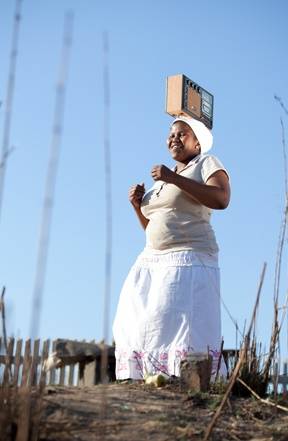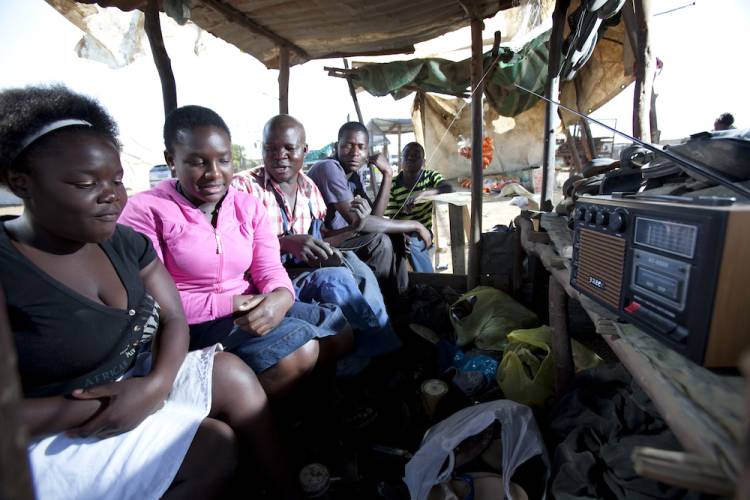Broadcasting in South Africa
Contents
1. OVERVIEW OF DEVELOPMENTS IN BROADCASTING IN SOUTH AFRICA SINCE 1994
- a) An Independent Broadcast Regulator
- b) The formation of an authentic public broadcaster
- c) Community Radio
- d) Privatised SABC sound services
- e) Greenfields Sound broadcasting Services
- f) Free-to-air television broadcasting services
- g) Subscription broadcasting services
2. BROADCASTING LEGISLATION AND DEVELOPING BROADCASTING POLICY FOR POST-APARTHEID
3. CONVERGENCE LEGISLATION AND DIGITAL MIGRATION
- a) The Electronic Communications Act
- b) National strategy for the migration of broadcasting systems from analogue to digital
1. OVERVIEW OF DEVELOPMENTS IN BROADCASTING IN SOUTH AFRICA SINCE 1994
Gross advertising revenue for South Africa’s broadcasting industry is estimated to have increased in value from just over R2 billion to close to R8.5 billion between 1994 and 2006. This growth reflects massive transformation in the industry.
This is a huge departure from the Pre-1994 South African broadcasting environment which, in addition to the South African Broadcasting Corporation (SABC), offered only two commercial sound services, (Radio 702 and Capital Radio) and one private pay-TV service (M-Net).
This change in the broadcasting sector came as a result of regulatory reforms in the early nineties which, amongst others, yielded an authentic public broadcaster (SABC) with 3 TV channels and 19 public sound broadcasting services, a fledgling community sector of over 100 sound broadcasting services and one community television service, as well as a largely black owned commercial sector consisting of 15 sound services and 2 television operators. A new Community Television service has been licenced on a temporary basis.
a) An Independent Broadcast Regulator
Shortly after South Africa's first elections, the Independent Broadcasting Authority (IBA) came into being. It was tasked with regulating the country's broadcasting industry, which previously was under the direct control of the government's Department of Home Affairs. The introduction of a regulator, with constitutionally guaranteed independence, was a significant step forward for the industry.
June 2000 saw the merging of the IBA and the telecommunications regulator the South African Telecommunications Authority (SATRA) into the Independent Communications Authority of South Africa (ICASA). The merged regulator was governed by the ICASA Act. Mandla Langa, previously chairperson of the IBA was appointed as the first chairperson of ICASA (the regulator).
The ICASA Amendment Act promulgated in 2006 further amended the regulators functions and dealings. It also served to introduce a holistic enforcement and compliance structures to reflect convergence between networks. The commencement of the ICASA Amendment Act (together with Electronic Communications Act) has increased ICASA’s functions in the areas of investigation, inspection, complaints handling, dispute resolution, adjudication, regulation, and conduct of market review studies. The most fundamental impacts of the ICASA Amendment Act include;
b) The formation of an authentic public broadcaster
With the unbanning of the African National Congress (ANC) and other political movements in 1990, the electronic media sector was recognised as a crucial negotiating point. The focus of both the opposition and the National Party government at this time centred on the state broadcaster, the SABC, which was recognised as an immensely powerful voice in the dissemination of news and information.
What the media activism of the early nineties sought to achieve was to wrest control of this vital asset away from party political control before the country's first elections in 1994. The focal point of the struggle was to have an independent SABC board. Marches, protests and petitions by broad alliances of academics, church groups, youth organisations and trade unions were eventually successful and in 1993, Dr Ivy Matesepe-Casaburri (then South Africa's Minister of Communications) was appointed to head the first independent SABC board.
The SABC was relicensed in June 2005 and in line with section 10 of the Broadcasting Act, the new licenses reflected a reorganisation of the corporation into a commercial and a public section. This relicening comes from the SABC grandfathering with the establishment of the IBA in 1994. The new licence conditions, while affirming the PBS status of all the SABC’s services, gives practical effect to the distinction between these two divisions and imposes their respective obligations.
Consequently the SABC now comprises of a public and a public commercial division. The public radio division has 11 full spectrum sound services, a regional sound service KFM, a community sound service X-K FM, Lotus FM, Radio 2000, as well as two full spectrum multilingual channels SABC 1 and SABC 2. The public commercial arm comprises of three sound services 5 FM, Metro FM and Good Hope FM and one television channel SABC 3. The service also operates SABC Africa, which is a pay television channel accessible on the DSTV digital satellite platform.
c) Community Radio
From 1994 the IBA processed hundreds of community radio licence applications from diverse groups and sectors of South African society. Over 100 Community sound services are now in existence and although the sector has struggled to access advertising and other forms of financing it is recognised as being a crucial part of the South African broadcasting landscape - in providing diversity for listeners and much needed skills for the commercial radio sector.
The rules governing community radio are laid out in the Position Paper on Community Sound Broadcasting Services as reviewed in 2005 and Community Television published in 2004. These incorporate the licensing, regulatory and broad operating principles for community broadcasting services.
d) Privatised SABC sound services
Having started the ball rolling with the establishment of the community radio sector in 1994, the regulator turned its attention to commercial radio in 1996 - privatising six lucrative SABC stations: Highveld Stereo (Gauteng), Radio Jacaranda (Gauteng), East Coast Radio (KwaZulu Natal), KFM (Western Cape), Radio Algoa (Eastern Cape) and OFM (Free State). Government raised over half a billion rand in cash as the stations were licensed to various black controlled groups.
e) Greenfields Sound broadcasting Services
In early 1997 the IBA held hearings for 8 new commercial radio licences in South Africa's three biggest cities - Johannesburg, Cape Town and Durban. Applicants targeting black audiences with new formats were generally favoured with two 'smooth jazz' licences (P4 - Cape Town and Durban), one kwaito station (Y-FM) and one urban contemporary station (Kaya FM). The remaining four licences went to an English language talk station (Cape Talk), two Afrikaans talk stations (Punt Cape Town and Durban) and a classical music station (Classic FM). The two Punt services were subsequently closed down in 2000, due to financial difficulties.
Both the Greenfields sound services and the privatised SABC sound services are governed by the rules laid out in the Position Paper on Private Sound Broadcasting Services.
ICASA has consolidated a licensing process for secondary commercial markets. This has resulted in 3 new sound broadcasting services being licenced. The licenced broadcasting services are Capricon FM in Limpopo, M-Power Radio in Mpumalanga, and Radio North West in the North West provinces. A further two licenses are also planned for in the secondary markets of the Eastern Cape and Free State.
f) Free-to-air television broadcasting services
In 1998, South Africa's first free-to-air television channel, etv, was licensed. This followed a competitive bidding process with 7 applicants. etv is licensed to broadcast nationally and from 2001 it was mandated to carry 45% South African content. etv is governed by the rules laid out in the Position Paper on the Licensing of South Africa's first free-to-air television channel.
g) Subscription broadcasting services
Prior to the invitation to apply for Subscription broadcasting services that ICASA issued on 31 January 2006 the subscription broadcasting landscape in South Africa comprised a wide spectrum of players operating on permission to continue. These included the only licensed terrestrial subscription service, M-Net as well as the various subscription television and audio services, delivered mainly via satellite.
The subscription broadcasting services policy framework adopted the principles of the Triple Inquiry report, by distinguishing between services utilising terrestrial frequencies and non-terrestrial subscription broadcasters. This was consolidated in the position paper on subscription broadcasting services published on 1 June 2005. The position paper outlined approaches to multichannel services, authorisation of channels, application of South African Content requirements, ownership and control structures, licence application procedures and fees.
Subsequent to issuing the position paper, the Authoirty issued an invitation to apply for satellite and cable subscription broadcsting serivces on 31 January 2006. Out of the 18 applictions received 5 were successful, namely; ESAT, Multichoice, On Digital Media, Telkom Media and Walking on Water.
2. BROADCASTING LEGISLATION AND DEVELOPING BROADCASTING POLICY FOR POST-APARTHEID
a) IBA Act
Prior to the advent of constitutional democracy in South Africa in 1994, broadcasting was primarily regulated by the Broadcasting Act, 1976. The effect of this legislation’s provisions was government’s exclusive control over the formulation of broadcasting policy and regulation of broadcasting. The government also had exclusive rights over provision of broadcasting services through the South African Broadcasting Corporation (SABC).
The Independent Broadcasting Authority Act No. 153 of 1993 (the IBA Act) established the Independent Broadcasting Authority (the IBA) on the 30th March 1994. In granting the IBA its public interest mandate and powers, enunciated in sections 2, 28 and 78 of this Act, it proclaimed a new system of regulating broadcasting in South Africa. In addition it gave the policy directives various broadcasting policy areas, including;
b) The Triple Inquiry Report
Among the regulator's first tasks was to conduct a wide-ranging policy inquiry known as the 'triple inquiry', which focused on the viability of the public broadcaster, South African content rules for radio and television, as well as cross-media rules prohibiting cross ownership of broadcasting and print interests. The Triple Inquiry Report lays out the regulator’s conclusions on these matters. Its most important recommendations were:
c) Broadcasting Act
In 1999 the South African government introduced a new piece of broadcasting legislation - the Broadcasting Act. In establishing this legislation the Department of Communications (The DoC), through the 1998 White Paper on Broadcasting Policy, reflected government’s policy stance on a number of issues not covered within the IBA Act. These included universal access, diversity, nation building, education, and strengthening the moral fibre of society. The framework provided for a clear delineation of roles and responsibilities in relation to policy formulation, regulation and the provision of broadcasting services. It also set the basis for future public policy goals such as the migration of broadcasting services from analogue to digital networks and the regulation of converged networks. Amongst the most important features of the Broadcasting Act are:
3. CONVERGENCE LEGISLATION AND DIGITAL MIGRATION
a) The Electonic Communictions Act
In 2005, the Minister of Communications tabled two Bills in the National Assembly aimed at changing the regulatory framework to meet the needs of convergence, that is the Convergence Bill [B09-2005] and The ICASA Amendment Bill [B32-2005]. The former specifically set out a converged licensing framework and its repealing of the existing broadcasting and telecommunications legislation. The aim was to consolidate legislation governing the telecommunications and broadcasting sectors as well as promote convergence of network services and technologies in these sectors. This Bill was later renamed the Electronic Communications Bill (the ECA). The most noteworthy aspects of the ECA include,
b) National strategy for the migration of broadcasting systems from analogue to digital
A Digital Migration Strategy has a bearing on the technological advancement of the country, particularity on South Africa’s ability to host a successful Soccer World Cup in 2010. The plan to migrate South Africa’s broadcasting system from analogue to digital will enable broadcasters to have better capacity to improve and diversify their services. Other benefits are, better video and sound quality and the transmission of an increased amount of data. The main challenge of implementing this strategy lies in balancing expansion of services to all South Africans, particularly the poor, with market growth and socio-economic development.
In May 2005 the Minister of Communications (The Minister) established the Digital Broadcasting Migration Working Group (“DMWG”). The DMWG was established to assist the Minister to develop policy, content, economic and technical recommendations, towards a national strategy for the transition of broadcasting systems from analogue to digital broadcasting in South Africa. Respective committees were drawn from representatives of the broadcasting industry, Independent Communications Authority of South Africa (ICASA), government, civil society, organised labour and consumer groups, at the DMWG inaugural meeting held on 26 August 2005. The DMWG final inputs on how government could best manage the transition from analogue to digital broadcasting were delivered to the Minister on the 30th November 2006. The main findings and recommendations focused on approaches on switchover, implementation timeframes, licensing, approaches to frequency allocation, consumer adoption and a national implementation strategy.
4. FURTHER DEVELOPMENTS
- The incorporation of the functions and staff of the postal regulator are incorporated into ICASA;
- Increasing the role of the Council Chairperson;
- Council size increases from 7 to 9;
- Inquiry processes for telecommunications and broadcasting are converged into one process;
- Council appointment and performance management process now are the responsibility of the Minister;
- Telecommunications and broadcasting complaints hearing and enforcement functions and processes now reside within a single body, namely the Complaints and Compliance Committee (CCC); and
- Powers of inspectors are increased and functions clarified;
- Licensing and creation of public, community, commercial broadcasting sectors;
- South African television content and music;
- The broadcasting frequency plan;
- Subscription and multichannel services;
- Media and equity ownership rules, black economic empowerment; as well as promotion of media diversity, and marginalised languages;
- South African music quota for all sound services broadcasting in excess of 15% music;
- South African content quota for free-to-air television;
- The nature and funding of the Public Broadcasting Services;
- The nature, number and licensing of commercial sound and television;
- The terms and timeframes for the incorporation of TBVC broadcasting services into the broader South African broadcasting system;
- Universal access;
- Broadcasting infrastructure and frequency planning;
- Empowerment and HR and capacity development;
- Broadcasting language policy;
- South African content as well as cross media Ownership;
- The provisions laying out a mandate for the SABC;
- The provisions dealing with the restructuring of the SABC, dividing the corporation into public service and publicly owned commercial services;
- The provisions allowing for the licensing of satellite broadcasting;
- The Annual Frequency Plan;
- Sports Broadcasting Rights;
- Regional television Services;
- Singal Distribution;
- Convergence of Telecommunication and Broadcasting regulation-making processes;
- Replacement of the existing telecommunications and broadcasting licensing frameworks with a single licensing regime; and
- Enhancement of the Regulator’s competition powers in terms of dispute settlement and significant market power determinations.
Menu
- > Community Broadcasting: NAB presentation on ICASA Compliance
- >NAB - NEMISA Workbook for Community Radio Workshops 2022
- >Rising to the Contagion 2020 : NAB CRC Response to COVID-19
- >NAB State of the Broadcasting Industry Report 2019
- >NAB Future Proofing Community Radio Guide 2018
- >NAB State of the Broadcasting Industry Report 2014
- >Regulation of Broadcasting in SA since 1994




